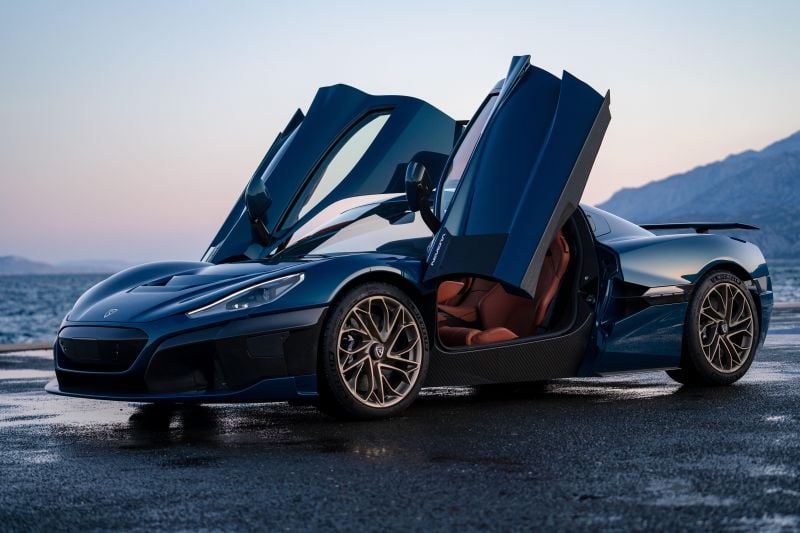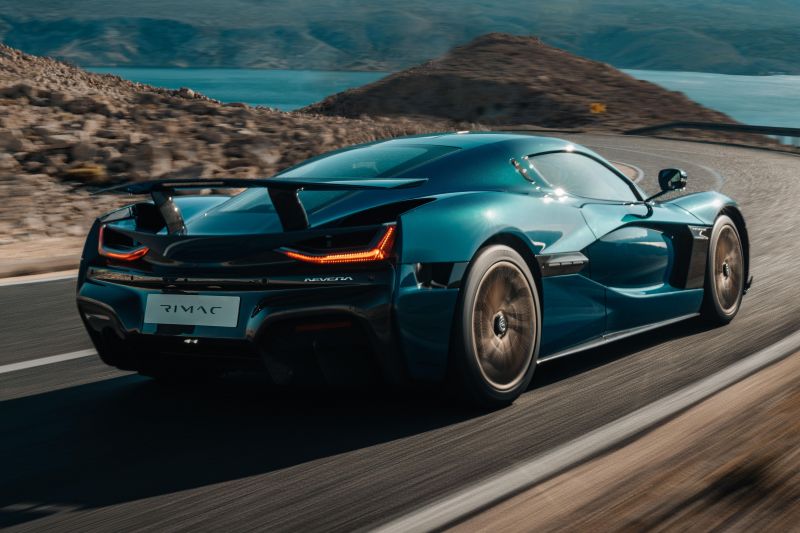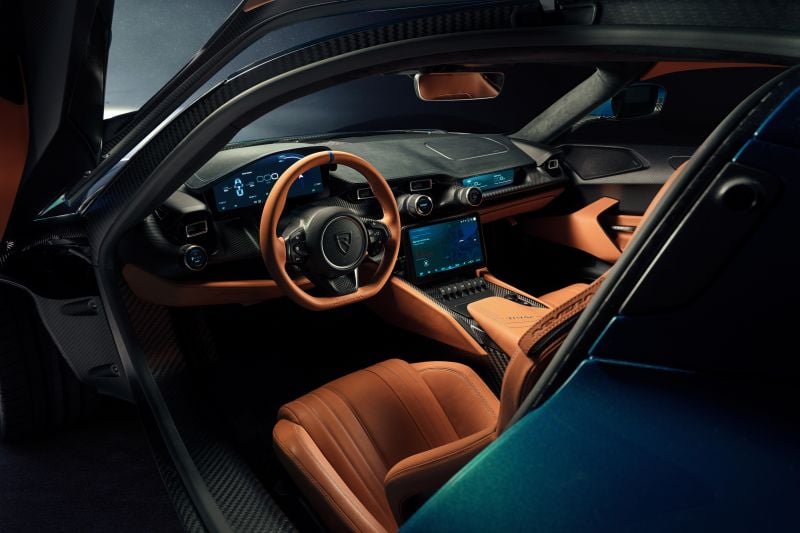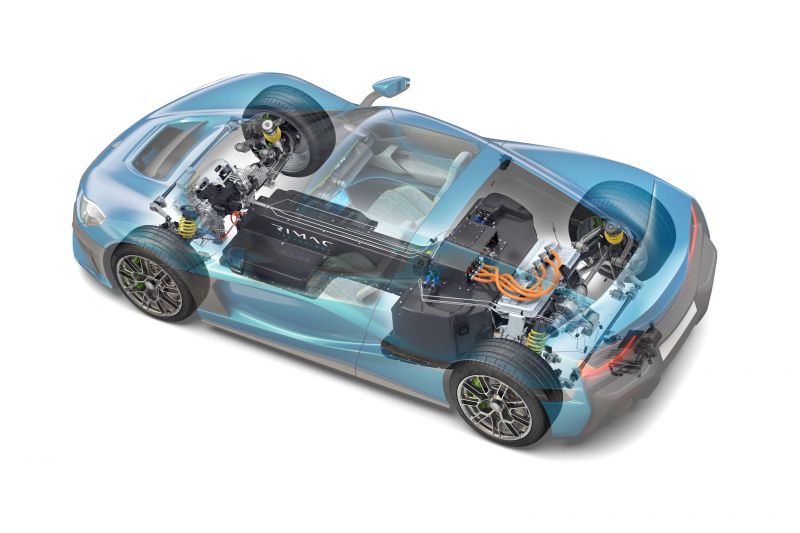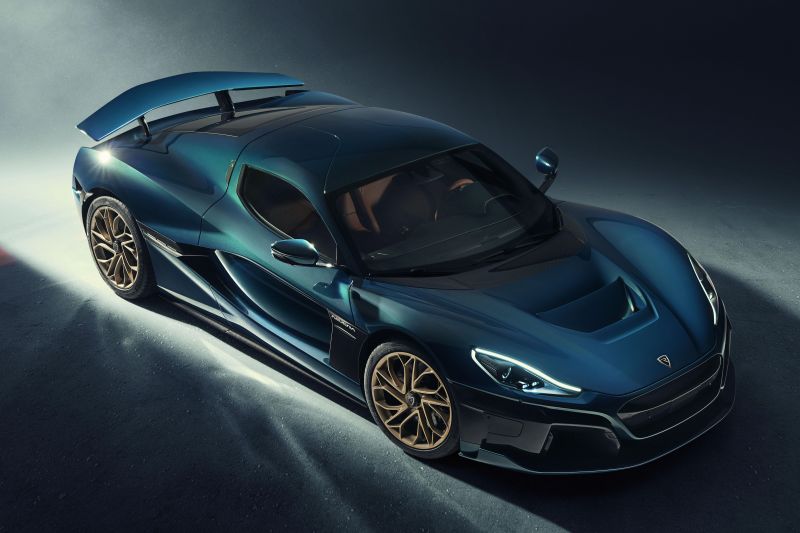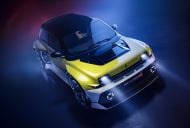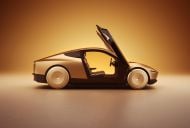Croatian electric vehicle manufacturer Rimac has launched its second model into the ever-expanding electric hypercar scene.
Named after a fast and often unexpected storm that whips Croatia’s Mediterranean coast with plenty of lightning, the Rimac Nevera boasts a multitude of aerodynamic and drivetrain improvements over the 2018 C_Two concept.
Each wheel has its own electric motor, and together they are said to deliver a total of 1427kW of power and 2360Nm of torque.
This setup allows the Nevera to do without traditional traction and stability control setups.
In their place is an advanced torque vectoring system which makes 100 calculations per second to deliver the right amount of torque to each wheel depending on the road conditions and driving style.
According to the company the Nevera can complete the 0-100km/h dash in 1.85s on its way to 161km/h (100mph) in 4.3s, and 300km/h in 9.3s.
Top speed is said to be 412km/h, and the quarter mile (400m) should take only 8.6s.
Located primarily along the car’s centre tunnel is a 120kWh lithium-manganese-nickel battery designed in-house by Rimac.
Range under the WLTP testing scheme is said to be around 547km on a full charge.
The H-shaped battery enclosure forms a critical part of the car’s underlying structure, and is said to improve structural stiffness by 37 per cent. It also helps the Nevera have a 48:52 front-to-rear weight balance.
Rimac claims the Nevera’s carbon-fibre monocoque body weighs just 200kg, has a torsional stiffness of 70,000Nm/degree, and is the “largest single carbon fibre piece in the entire automotive industry”.
Stopping ability comes from an electro-hydraulic brake booster setup, which mixes regenerative braking and six-piston 390mm Brembo carbon-ceramic disc brakes.
If either the battery pack or physical brakes are running hot, the car will automatically preference the other system. To ensure there’s a consistent feel for the driver, the setup includes a brake pedal feel simulator.
Inside the cabin there are three high resolution displays, including one for the passenger. Although most of the car’s functions are offloaded onto these screens, there are still a good number of rotary controls and switches made out of billet aluminium.
The car supports over-the-air software updates. In 2022, all Neveras will gain an AI Driver Coach feature, which uses the car’s 12 ultrasonic sensors, 13 cameras, six radars and a clutch of Nvidia processors to provide real-time voice and visual guidance for acceleration and braking points, and driving lines at a select number of race tracks around the world.
The company will only sell 150 Neveras. Each one will be tested and signed off by company founder Mate Rimac before final delivery.
Pricing begins at €2 million ($3.1 million) in Europe. There are three standard trim levels to choose from: GT, Signature and Timeless.
Naturally customers can choose to trim and equip the to their tastes as far their budgets will stretch.





